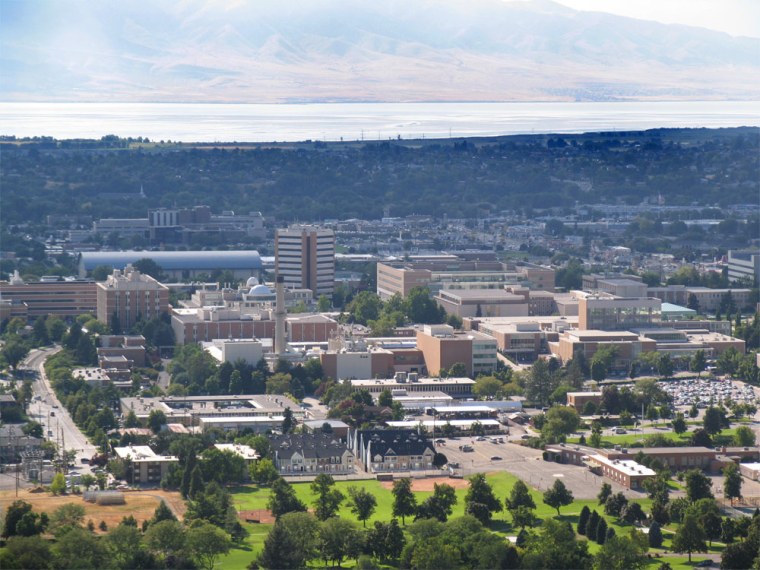They contain only 20 percent of the U.S. population, but midsize metropolitan areas can be an appealing alternative to life in the big city.
The best of the bunch is Provo, Utah, according to a new bizjournals quality-of-life study. Boulder, Colo., and Madison, Wis., are the runners-up.
America’s 124 midsize metros, with populations between 250,000 and 1 million people, have a total of 60 million residents. That puts them in the shadow of the nation’s 51 major metros, those in the million-plus category, which contain 54 percent of all Americans.
The study compared the 124 midsize metros in 20 statistical categories, using the latest U.S. Census Bureau data. The highest scores went to well-rounded places with healthy economies, light traffic, moderate costs of living, impressive housing stocks and strong educational systems.
These are the top 10 midsize metros in terms of quality of life:
- Provo, Utah
- Boulder, Colo.
- Madison, Wis.
- Bridgeport-Stamford, Conn.
- Ann Arbor, Mich.
- Ogden, Utah
- Fort Collins, Colo.
- Boise, Idaho
- Colorado Springs, Colo.
- Des Moines, Iowa
Provo, which is located 45 miles south of Salt Lake City, earns top marks for its impressive inventory of big homes. Nearly 26 percent of Provo’s houses have nine or more rooms. No other mid-sized metro does better than 20.2 percent.
But housing is not Provo’s only strength. The Provo area has enjoyed steady population growth this decade, expanding 31 percent since 2000. Its unemployment rate typically runs two to three points below the national average. And it has a strong educational system, capped by the presence of Brigham Young University.
The runners-up are both college towns, too. Boulder and Madison are respectively the homes of the University of Colorado and the University of Wisconsin.
Almost 55 percent of Boulder’s adults have bachelor’s degrees, easily leading all midsize metros in that category. Boulder is also noteworthy for its healthy entrepreneurial spirit. Seven percent of its adults are self-employed, twice the national average.
Madison not only has a major university, but also serves as Wisconsin’s state capital, giving it the benefit of a stable and upscale employment base. Forty-four percent of Madison’s workers hold management or professional jobs. The comparable figure for a typical mid-range metro is 33 percent.
The other members of the top 10 took different paths to get there. Profiles of the top 10 mid-sized metros start here.
Bridgeport-Stamford is one of America’s most affluent metros. Its median household income of $80,241 is easily the highest in any midsize market.
Ann Arbor, site of the University of Michigan, has the nation’s strongest concentration of adults with master’s, doctoral and professional degrees, 27.7 percent.
Ogden, which is 40 miles north of Salt Lake City, is the only midsize metro other than Provo where at least 20 percent of all houses have nine or more rooms.
Fort Collins is another college community, the home of Colorado State University. It’s one of just six midsize metros where more than 40 percent of all adults hold bachelor’s degrees.
Boise is one of the fastest-growing places in America, adding 123,000 people since 2000, a growth rate of 26.4 percent. The typical midsize metro grew 8.4 percent over the same span.
Colorado Springs has a sizable corps of young adults, giving it a strong foundation for the future. Nearly 30 percent of Colorado Springs’ residents are between the ages of 25 and 44, sixth-best in the midrange study group.
Des Moines is a joy for commuters fed up with the hassles of big-city traffic. The typical Des Moines adult takes 19.7 minutes to get from home to his or her workplace, compared to more than half an hour in major metros such as New York City, Chicago and Los Angeles.
All 124 markets in the study have been officially classified as metropolitan areas by the U.S. Office of Management and Budget. Each midsize metro is centered on a city with at least 50,000 residents. Adjacent suburbs and nearby countryside are added to boost the total population into the range of 250,000 to 1 million.
The largest midsize metros are Tucson, Ariz., with 967,000 residents; Honolulu, with 906,000; and Tulsa, with 905,000, based on 2007 Census Bureau estimates. At the tail end are Cedar Rapids, Iowa, with 253,000 residents, and Santa Cruz, Calif., with 252,000.
